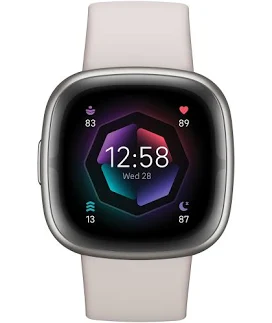Here you can find New and Latest Technology, Science progress, Health care stuff..........and a lot more
Sunday, February 12, 2023
The Importance of Health Insurance: Understanding Your Coverage Options
Saturday, February 11, 2023
The Benefits of Embracing Aging: How to Age Gracefully and Happily
 |
| Dr. J. Fung |
In addition to physical health, mental health is also important as we age. Keeping our minds active through activities such as reading, solving puzzles, and learning new skills can help improve cognitive function and prevent age-related declines.
The Rise of Plant-Based Diets and their Benefits for Health: Understanding the Trend and its Impact
 |
| Harvard Health |
In addition to the health benefits, plant-based diets are also more sustainable and environmentally friendly. By reducing the consumption of animal products, we can decrease our carbon footprint and reduce the strain on the planet's resources. Animal agriculture is a major contributor to greenhouse gas emissions and deforestation, and adopting a plant-based diet can help mitigate these negative impacts.
Friday, February 10, 2023
Basics of green tea
Monday, February 6, 2023
Friday, February 3, 2023
How to Save Humanity from Extinction
1. Figure out climate change:
2. Figure out nukes:
3. Figure out asteroids:
Best for Wear OS
Thursday, February 2, 2023
Best Watch for Android Owners
Courtesy: wired.com
Best Running Watch

Courtesy: wired.com
Best Budget FitnessTracker
Samsung S23 Ultra

Apple Series 8 watch
Apple Series 8
People tend to hold on to their Apple Watches for years, and rightfully so—it is far and away the best fitness tracker if you have an iPhone. So if you want one, you're best off with the latest Series 8. We're still testing it, but this year's Series 8 comes with new body temperature sensors that are aimed at tracking menstrual cycles. It also has new safety features, such as Crash Detection. In the event of a severe car accident, the Series 8 will use a powerful new accelerometer and gyroscope as well as the barometer, GPS, and microphone to detect a car crash and alert emergency services if the user has not responded within 10 seconds.
Best Fitness Trackers and Watches for Everyone
LIKE EVERY PIECE of gear you wear on your body day in and day out, fitness trackers are incredibly personal. They have to be comfortable and attractive, sure, but they must also fit your lifestyle, as well as when and how you like to work out. Do you bike, row, or do strength training? Do you run on trails for hours at a time, or do you just want a reminder to get up every hour?
Fitbit Charge 5


Courtesy: https://www.wired.com/
Wednesday, February 1, 2023
Smartwatches and Fitness Trackers: How They're Changing the Game for Health and Wellness
One of the biggest benefits of smartwatches and fitness trackers is their ability to track physical activity and monitor vital signs such as heart rate, sleep patterns, and calorie burn. This data can be used to develop a more comprehensive picture of an individual's overall health, allowing them to make informed decisions about their diet, exercise, and overall lifestyle.
Another benefit of these devices is that they make it easier to set and track fitness goals. With features such as customized workout plans, progress tracking, and personalized coaching, users can stay motivated and on track with their fitness goals.
Smartwatches and fitness trackers also offer a convenient and easy way to manage stress and improve mental well-being. With features such as guided meditation and breathing exercises, users can take control of their mental health and reduce stress levels.
Finally, these devices provide a more convenient and accessible way to monitor health, reducing the need for frequent doctor visits and traditional health monitoring methods. This can be especially helpful for individuals with chronic health conditions, allowing them to better manage their health from home.
The Benefits of Telehealth: Why More People are Turning to Virtual Doctor Visits
Your Brain Uses Calculus to Control Fast Movements
Your Brain Uses Calculus to Control Fast Movements
To sharpen its command over precise maneuvers, the brain uses comparisons between control signals—not the signals themselves.
This setup is the basis for research published in July in Cell Reports by the neuroscientists Elie Adam, Taylor Johns and Mriganka Sur of the Massachusetts Institute of Technology. It explores a simple question: How does the brain—in mice, humans and other mammals—work quickly enough to stop us on a dime? The new work reveals that the brain is not wired to transmit a sharp “stop” command in the most direct or intuitive way. Instead, it employs a more complicated signaling system based on principles of calculus. This arrangement may sound overly complicated, but it’s a surprisingly clever way to control behaviors that need to be more precise than the commands from the brain can be.
Control over the simple mechanics of walking or running is fairly easy to describe: The mesencephalic locomotor region (MLR) of the brain sends signals to neurons in the spinal cord, which send inhibitory or excitatory impulses to motor neurons governing muscles in the leg: Stop. Go. Stop. Go. Each signal is a spike of electrical activity generated by the sets of neurons firing.
The story gets more complex, however, when goals are introduced, such as when a tennis player wants to run to an exact spot on the court or a thirsty mouse eyes a refreshing prize in the distance. Biologists have understood for a long time that goals take shape in the brain’s cerebral cortex. How does the brain translate a goal (stop running there so you get a reward) into a precisely timed signal that tells the MLR to hit the brakes?
“Humans and mammals have extraordinary abilities when it comes to sensory motor control,” said Sridevi Sarma, a neuroscientist at Johns Hopkins University. “For decades people have been studying what it is about our brains that makes us so agile, quick and robust.”
Read the full article here.










